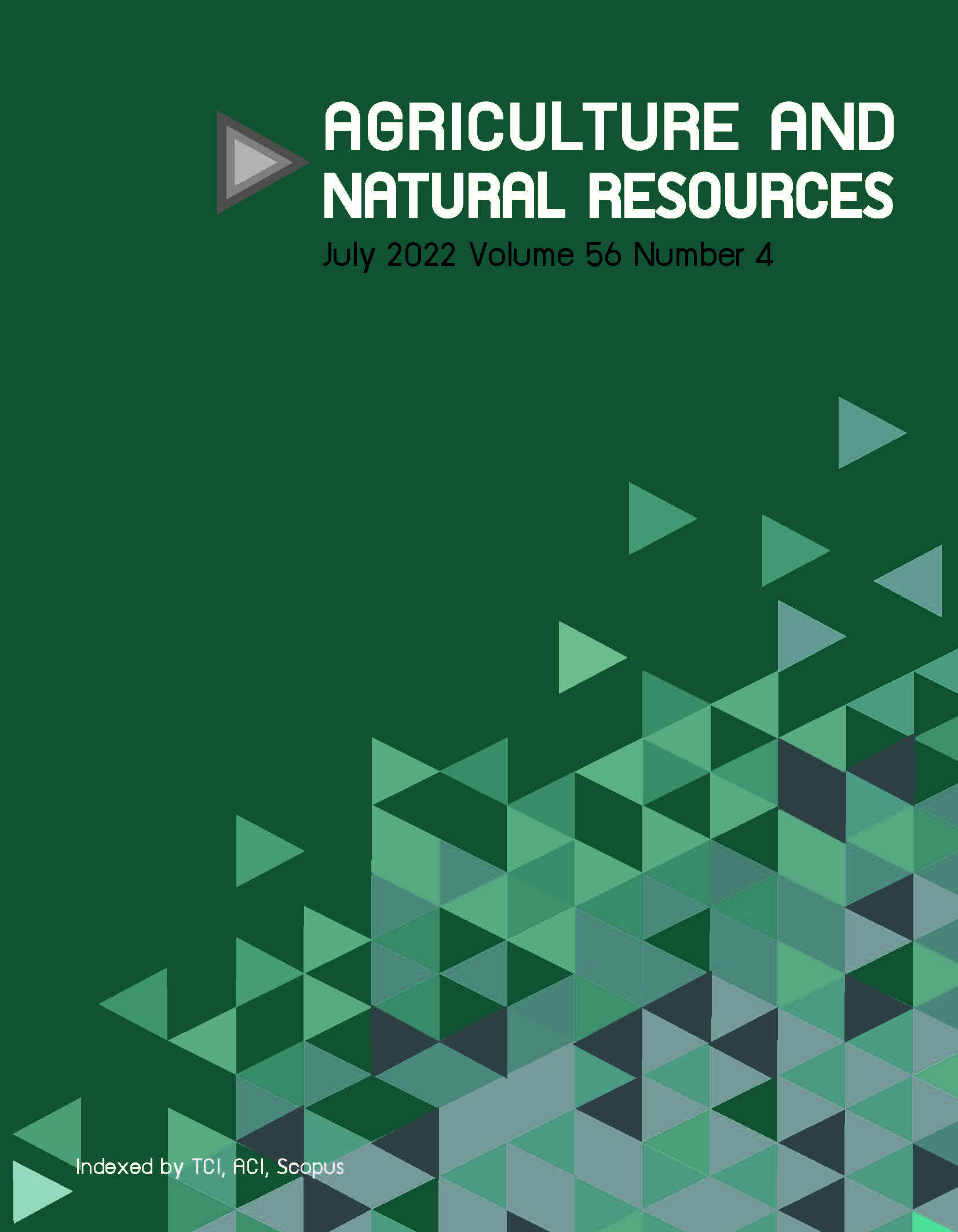Potential alpha-glucosidase inhibitory activity of root extracts from Morinda citrifolia L.
Keywords:
Alpha-glucosidase, Gas chromatography-mass spectrometry (GC-MS) analysis, Molecular docking, Morinda citrifolia L., Phytochemical screeningAbstract
Importance of the work: Morinda citrifolia L., called ‘yo-ban’ in Thai, is a medicinal plant that is widely used in traditional medicine. This is the first report on the phytochemical analysis and in-vitro α-glucosidase inhibitory activity of the roots of M. citrifolia.
Objectives: To explore the main chemical components of the root extracts and investigate their in-vitro α-glucosidase inhibitory activity.
Materials & Methods: The dried root powders were macerated with an increasing polarity of solvents (hexane, dichloromethane, ethyl acetate and ethanol). The levels were evaluated of the inhibition of α-glucosidase by all root extracts. The main chemical components of the bioactive extracts were investigated using gas chromatography-mass spectrometry (GC-MS); molecular docking of four promising GC-MS-detected compounds was conducted.
Results: All the phytochemical assays of the root extracts confirmed the presence of bioactive secondary metabolites such as terpenes, steroids, phenolics and flavonoids. Among the four crude extracts, the dichloromethane root extract had the highest α-glucosidase inhibitory activity against rat intestinal sucrase with a half-maximal inhibitory concentration (IC50) value of 0.943 mg/mL. Furthermore, this extract inhibited yeast α-glucosidase with an IC50 value of 0.646 mg/mL, having greater activity than the standard drug, Acarbose® (IC50 = 1.122 mg/mL). Additionally, analysis of the main chemical components of the dichloromethane extract based on GC-MS revealed the presence of Neophytadiene as a promising bioactive component. Molecular docking of the four promising GC-MS-detected compounds suggested the feasibility of these compounds as viable α-glucosidase inhibitors.
Main finding: This study is the first to demonstrate the presence of an antidiabetic diterpene in the plant using GC-MS analysis. Therefore, this plant has high potential for further research into antidiabetic medical applications.
Downloads
Published
How to Cite
Issue
Section
License
Copyright (c) 2022 Kasetsart Universityonline 2452-316X print 2468-1458/Copyright © 2022. This is an open access article under the CC BY-NC-ND license (http://creativecommons.org/licenses/by-nc-nd/4.0/),
production and hosting by Kasetsart University of Research and Development Institute on behalf of Kasetsart University.







